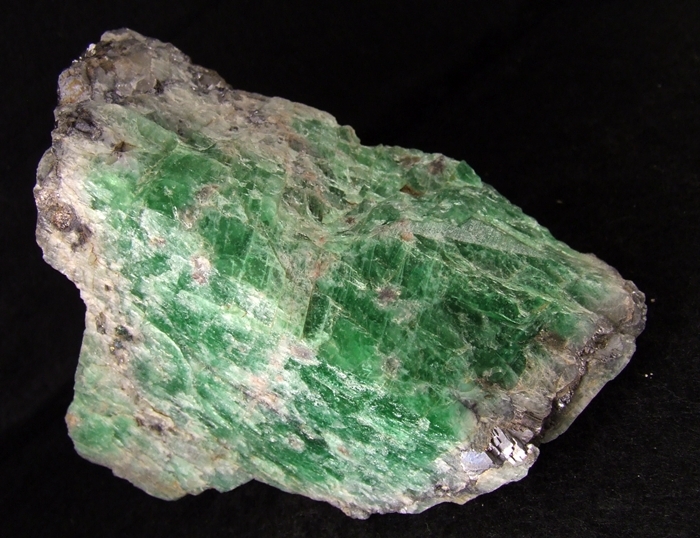Brunswick deposits
reoccuring theme that goes unsung.
Most focus on the sulphide geology.
Yet... a reoccuring theme of silicates and feldspars flank the "
stringer sulphide " ore bodies.
Stringers -
150m wide x 700+m deep.
Versus Feldspars
400m wide x 750m strike / mineralized with zinc ( caribou mine report )
The impression i get is,
Silicates, Granites, Feldspars were first onscene.
Sulphide stringers broke through creating elongated strunger deposites.
Sulphide fluids spawned distal staining of other nearby geologies.
Which begs...
If zinc is present outside the core sulphide stringer with in Feldspars.
And if Feldspars, Silicates, Granatoids are moreso country rock.
Then why place so much focus on stringer sulphides ?
Crux of the matter ? XRF spectrometry cannot detect phosphorus.
https://clu-in.org/conf/tio/xrf_080408/prez/XRF_02pdf.pdf Second Crux ? Zinc
easily bonds to phosphoric acid. = might go undetected -------> hidden in a phosphorus bond.
It gets even wilder... if one tries to track the genisus of NB zinc
one must factor multiple ( potential ) transitionsl phases ( morphing )
Silicic acids, hydrogen alterations, sodium swaps to chloride, lime contact to carbonate etc....
If a notable Bathurst miner mentions zinc in the feldspars / silicates outside sulphide stringer
it instantly places my mind in the realm of -
Feldspar Origin.
Sulphide vent spurts up.... sulphide the intruder.
Heavy mineralized Feldspars = darker sulphide surface staining.
Lighter sulphide surface staining = lessor minerals in, Feldspars.
Feldspars are reknown for, copper, iron, gold.
Yet... few quick sesrches online reveal lead and zinc are also found in, Feldspars.
Feldspars also have the micas, pyrites etc...
Feldspar is sheet silicate vs quartz silicate is cubic crystal.
Both silicate.
Throw in the mix lime from volcanic ash... and the what if,
zinc was first a carbonate ?
Carbonates are apparent in many of the NB deposits.
Why zinc, phophorus, boron should be given more creedence ? Boron, Phosphorus, Zinc are found in NB deposits.
Boron + Phosphorus = diamond chip wafers = super fast speeds
Zinc apparently has a similar attribute to phosphorus = glow in dark.
My hunch is... could act the same as phosphorus in computer chips + new tech solar panels.
Does zinc oxide glow in the dark ? For many years, one of the only known glow-in-the-dark substances was zinc oxide
activated by copper. Dec 7, 2018
Australia's Broken Hill Deposit Green Lead
Silicate style.
Yet... there's also zinc in the deposit.
Wink.
 https://www.csiro.au/en/news/all/articles/2024/april/plumbian-orthoclase
https://www.csiro.au/en/news/all/articles/2024/april/plumbian-orthoclase Aussies think Broken Hill is a one of a kind - labelling the ore to kyptonite
due to its somewhat glowing ore.
I'm sure others know what was on my mind....lol
Gotta be a phosphorus connection. ( phosphoric acid )
Broken Hill silicates.
Not quite quartz
Not quite feldspar
In between
= still silicates
Discovery, Exploration and Investigations of Phosphate Deposits in Queensland
Broken Hill South Limited's discovery of phosphate deposits in the northwest of Queensland in 1966 prompted intensive exploration which has proved phosphate rock in excess of 2,000 million tons at ten separate deposits
https://www.ausimm.com/publications/conference-proceedings/ausimm-annual-conference-minerals-for-agriculture-new-zealand-march-1971/discovery-exploration-and-investigations-of-phosphate-deposits-in-queensland/
Feldspars = Phosphates
Lime glowing greens, med greens, aqua greens throughout New Brunswick
XRF cannot detect phosphorus
Zinc easily bonds to Phosphoric acid
NB deposits have seen lots of morphology
Zinc can sublime ( turn to gas ) with acid and fire assaying.
Zinc sulphate
Zinc phosphate
Zinc chloride
Zinc carbonate
Zinc fluoride
Zinc silicate ( solution ) silicic acid
If Feldspars are common in NB and phosphorus is part makeup of feldspars
I'd do a doible take on all minerals potentially bonding to - phosphate.
Avoid - aqua regia ( chl + nitric ) even 4 part stay clear of.
Run with - crush green silicates real fine soak in water - zinc ( aq ) phosphate
Or... Singular acid. = Sodium peroxide.
STRATMAT DEPOSIT ( aside of Heathe Steele ) FELDSPARS / GRANITES / SILICATES / SULPHIDES
The Southwall Fragmentals (coarse fragmentals, lapilli tuffs, bedded or siliceous tuffs) are the oldest rocks of the mine sequence. They are composed of
fine-grained siliceous fragments within a matrix of
phyllosilicates (muscovite > chlorite > biotite). These rocks contain an average of 2 to 4% dis- seminated pyrite, minor sphalerite, galena and chalcopyrite. They grade upward into the ore-bearing sediments (chert and phyllites) of the Stratmat Sequence.
The Stratmat Sequence consists of disseminated and massive sphalerite-galena-pyrite and chal- copyrite lenses. The sulphides are fine- to medium-grained. The deposits have a relatively low iron content, averaging 15% to 20% pyrite.
Talc and chlorite are abundant and associated with the ore. Gangue minerals include
muscovite, chlorite, talc, quartz and carbonates (calcite> ferroan dolomite and siderite). A sedimentary layer containing 1% to 2% disseminated pyrite is overlying the ore.
The Northwall Sequence rocks are dominated by
feldspar-rich crystal tuff associated with other
tuff facies. Pyrite is the predominant sulphide, but occurs only in trace amounts.
Page 12 13
photo of Stratmat deposit -----> looks like sulphide strunger spewed up
coated surface while majority of deposit is not sulphide.
Interesting.
take a look at photo. https://mend-nedem.org/wp-content/uploads/2362A.pdf NB feldspars and granites do host - uranium.
why are NB juniors not showing the phosphate and uranium % ?
Thought i'd share my viewpoint on, phosphate.
Could be an overlooked catalyst hiding valued minerals which XRF can't detect.
Sulphides are placed on a pedistle.
Most all copper, nickel is converted to sulphate.
Yet... many deposits especially copper are not sulphide many are carbonates.
Malachite, Bornite, Azurite etc...
Miners convert to sulphide because sulphates are a global standard.
Wink.